TSF12 Invited Speakers
Joint Fall Meeting of the Texas Sections of the APS, AAPT, and Society of Physics Students (Zone 13) October 25-27, 2012
Educational and Professional Success - A Lesson in Resilience and Persistence
Ginger Kerrick, NASA Flight Director
Ms. Kerrick will share the personal and professional challenges she has
faced as she pursued her dream of working at NASA. This will include her
experiences growing up in El Paso, attending Texas Tech University, and her
career at NASA.
Ginger Kerrick is a Flight Director at the NASA-Johnson Space Center (JSC)
in Houston. She is a native of El Paso, Texas. She received the BS and the
MS in Physics from Texas Tech University in 1991 and 1993, respectively. She
began working at JSC as a summer intern in 1991 and as a co-op in 1992. She
started her first permanent assignment at JSC in 1994 with the Safety,
Reliability and Quality Assurance directorate as a Materials Research
Engineer. In 1995 she, was reassigned to the Mission Operations Directorate
as an instructor for the International Space Station (ISS) Environmental
Control and Life Support System. Her responsibilities included training
development, simulator development, and training conduct for both crew and
flight controllers.
In 1997, Ms. Kerrick was selected for the newly-formed position of
Russian Training Integration Instructor, which was designed to address
the integration of Russian and US training programs for all Expedition
Crews, with special focus on the Expedition 1 crew. She supported all
Expedition 1 training both in the US and Russia. This experience
enabled her to provide integration not only in the area of crew
training, but also assist the operations community with the
integration of US and Russian displays, procedures, and operations
nomenclature. Following the launch of the Expedition 1 crew, she
supported operations from Mission Control Center, Moscow as a Crew
Support Engineer. Shortly after the Expedition 1 crew’s return to
Earth in 2001, she was presented with a unique opportunity – to become
the first non-astronaut ISS Capcom (Capsule Communicator) in Mission
Control Center, Houston. As a member of the Capcom Branch, she worked
console for Expeditions 3 – 11, and held positions as the Expedition 5
Lead Capcom, ISS Lead Capcom, and Capcom Deputy Branch Chief.
From the Inflationary Universe to Black Holes to Dark Energy using the Hobby-Eberly Telescope Dark Energy Experiment
Karl Gebhardt, University of Texas at Austin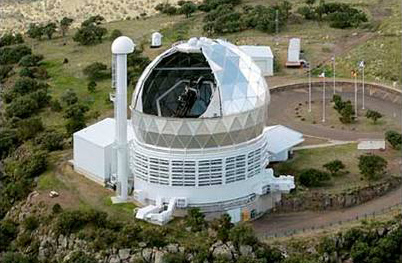
Observations over the next decade will examine the expansion history of the
universe, given that we have little understanding for what drives the
expansion either at late times (i.e., the nature of dark energy) or early
times (i.e., inflation). I will describe an observational approach based on
a large redshift survey called the Hobby-Eberly Telescope Dark Energy
Experiment (HETDEX). Our goal is to understand the universe expansion, and
also we will exploit the unique opportunity to study black holes and dark
matter profiles in galaxies. The latest results for both the dark matter
profiles and black holes show important trends that impact theories of
galaxy formation and black hole growth. Thus, the inflationary universe has
much to offer.
Karl Gebhardt is the Suit Professor of Astrophysics in the Department of
Astronomy at UT-Austin. His research ranges from black holes to dark matter
to dark energy. He has measured more black hole masses than anyone else in
the world, and he is actively targeting many more galaxies for this study.
He currently focuses on understanding dark energy using the Hobby-Eberley
Telescope Dark Energy Experiment at UT’s McDonald Observatory (HETDEX),
which is expected to begin operation in 2014. This will be the first major
experiment to search for dark energy, a central problem in 21st century
physics. As Steven Weinberg has said, any understanding of dark energy “must
rely on new observations by astronomers.” Dr. Gebhardt’s many awards
include a UT Teaching Excellence Award and (in 2012) the prestigious
O’Donnell Award in Science.
Physical Theory of the Immune System
Michael W. Deem, Rice University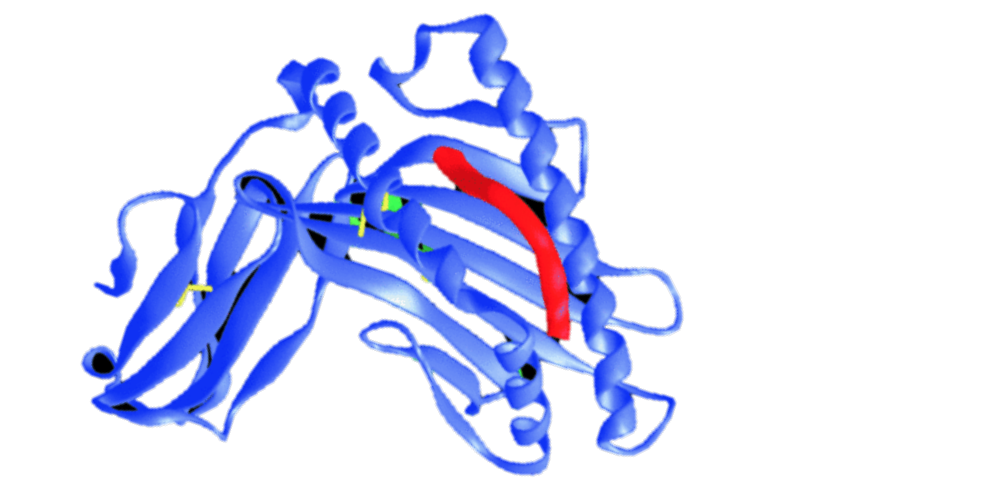
I will discuss to theories of the immune system and describe a theory of the
immune response to vaccines. I will illustrate this theory by application
to design of the annual influenza vaccine. I will use this theory to
explain limitations in the vaccine for dengue fever and to suggest a
transport-inspired amelioration of these limitations.
Michael Deem is the John W. Cox Professor of Bioengineerng and Professor of
Physics & Astronomy at Rice University. He applies techniques of
statistical physics to immunology, evolution, and materials. His group has
developed statistical methods to understand diseases including influenza,
dengue fever, and HIV. He has developed a hierarchical approach to protein
molecular evolution and a theory for how biological modularity spontaneously
arises in an evolving system. Dr. Deem was selected as a Top 100 Young
Innovator (MIT, 1999) and he received a Camille Dreyfus Teacher-Scholar
Award and a Colburn Award (American Institute of Chemical Engineers). He is
a Fellow of the American Physical Society, the American Association for the
Advancement of Science, the Biomedical Engineering Society, and the American
Institute for Medical and Biological Engineering. In 2012 Dr. Deem received
the prestigious O’Donnell Award in Engineering.
Physics of Failure
Michael Marder, University of Texas at Austin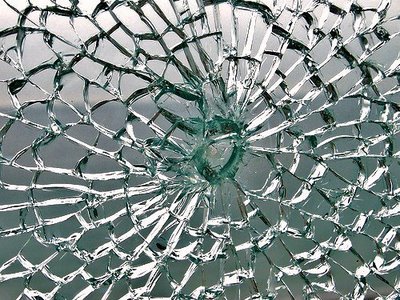
One of the questions solid state physics was long supposed to answer was why
a glass shatters when you drop it on the floor but a spoon does not. It
turned out not to be such an easy problem and was only occasionally
addressed until a series of major accidents in the 1940's and 1950's
directed scientific attention to it. I will talk about the basic ideas of
fracture mechanics that emerged as the answer, and display some recent
applications to failure of silicon, rubber, and graphene.
Michael Marder is Professor of Physics and Associate Dean of the College of
Natural Sciences at UT-Austin. He is an expert on fracture in materials –
why do glasses, metals, and graphene break? Since 1998 Marder has also been
co-director of the UTeach B.S. program for training science and math
teachers. This program has become widely acclaimed and is now being
replicated at many universities throughout the United States (e.g.,
GeauxTeach at LSU, CalTeach at UC Berkeley, and UKanTeach at U. Kansas).
Now Dr. Marder is applying techniques from physics to understand failure in
the educational process: he is analyzing the vast amount of data available
from student testing.
Selected Stories from the History of Wine
Stefan Estreicher, Texas Tech University
The archaeological and chemical evidence of wine making shows that
vines were cultivated and wine produced well over 7,000 years ago.
Wine has been a part of the history of Western Civilization ever
since. This talk will start with a brief overview of the key events
in the history of wine, and then I will select a few topics which
will be discussed in more detail. One of the topics includes a
rather tenuous conncection to Isaac Newton himself, a futile
attempt on my part to justify the very existence of this talk at a
TX-section APS meeting.
Stefan Estreicher is Horn Professor of Physics at Texas Tech University.
Higgs Searches at the CMS Experiment at the Large Hadron Collider
Nural Akchurin, Texas Tech University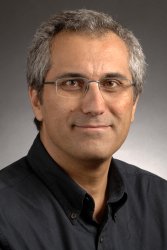
The Higgs boson was suggested in mid-1960s within the standard model and has
been the subject of numerous searches at accelerators around the world. Its
discovery would verify the existence of a complex scalar field thought to
give mass to three of the carriers of the electroweak force - the W and Z
bosons - as well as to the fundamental quarks and leptons. The CMS
Collaboration has identified, with a statistical significance of 5 standard
deviations, a new particle in proton-proton collisions at the Large Hadron
Collider at CERN. The evidence is strongest in the two-photon and
four-lepton (electrons and/or muons) final states which have the best mass
resolution in the CMS detector. The probability of the background
fluctuating as high as the observed signal is about 1 in $3\times10^6$. The
new particle is a boson (i.e. a particle with integer spin) with spin
different from one, and has a mass of approximately 125 GeV. Its measured
properties are, with the present data, consistent with those expected of the
Higgs boson.
Nural Akchurin is a Professor of Physics at Texas Tech University. He has
been a member since 1994 of the CMS experiment at CERN, where he has served
in several leading positions through the design, construction, and
commissioning phases. He led the R&D and construction of the quartz fiber
calorimeters that now cover forward and backward directions in the
experiment. These detectors play a crucial role in identifying tagging jets
in the production of the Higgs boson in the vector boson fusion. He is
widely acknowledged as an expert in high-energy physics calorimetry, and he
focuses on precision energy measurement of high-energy cosmic rays and the
analyses of data from the CMS experiment.
Theory and experiment in biomedical science
Roland E. Allen, Texas A&M University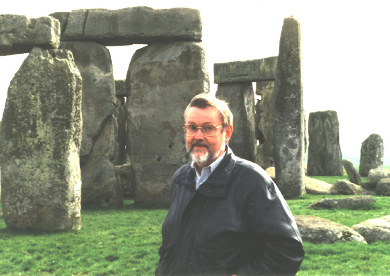
A physicist might regard a person as a collection of electrons and quarks,
and a biologist might regard her as an assemblage of biochemical
molecules. But according to some speakers at a recent Welch conference
[1], biology is a branch of physics. Then biomedical research is a
branch of applied physics. Even if one adopts a more modest
perspective, it is still true that physics can contribute strongly to
biomedical research. An example on the experimental side is the recent
studies of G protein-coupled receptors (targeted by more than 50
percent of therapeutic drugs) using synchrotron radiation and nuclear
magnetic resonance. On the theory side, one might classify models as
microscopic (e.g., simulations of molecules, ions, or electrons),
mesoscopic (e.g., simulations of pathways within a cell), or
macroscopic (e.g., calculations of processes involving the whole
body). We have recently introduced a new macroscopic method for
estimating the biochemical response to pharmaceuticals, surgeries, or
other medical interventions, and applied it in a simple model of the
response to bariatric surgeries [2]. An amazing effect is that the
most widely used bariatric surgery (Roux-en-Y-gastric bypass) usually
leads to remission of type 2 diabetes in days, long before there is
any significant weight loss (with further beneficial effects in the
subsequent months and years). Our results confirm that this effect can
be largely explained by the enhanced post-meal excretion of
glucagon-like peptide 1 (GLP-1), an incretin that increases insulin
secretion from the pancreas, but also suggest that other mechanisms
are likely to be involved, possibly including an additional
insulin-independent pathway for glucose transport into cells.
[1] Physical Biology, from Atoms to Medicine, edited by Ahmed H.
Zewail (Imperial College Press, London, 2008).
[2] Roland E. Allen, Tyler D. Hughes, Jia Lerd Ng, Roberto D. Ortiz,
Michel Abou Ghantous, Othmane Bouhali, Abdelilah Arredouani,
“Biochemical response and the effects of bariatric surgeries on type 2
diabetes” (submitted).
Work supported by the Qatar Foundation through the Qatar
Biomedical Research Institute and Texas A&M University at Qatar.
Roland E. Allen has been a faculty member at Texas A&M since 1970, working
in condensed matter, chemical, and optical physics, and other
areas, before recently turning to biomedical/biological physics.
He received a B.A. from Rice University and a Ph.D. from the
University of Texas at Austin (both in physics). He was a
Sabbatical Scientist at the Solar Energy Research Institute (now
called the National Renewable Energy Laboratory) and a Visiting
Associate Professor at the University of Illinois. Last semester he
taught and did research in Education City, Qatar, a rather amazing
country with unexcelled
multiculturalism and aspirations. More information is at his
website.
Answering Dirac's Challenge: Practical Quantum Mechanics for Materials
Jim Chelikowsky, University of Texas at Austin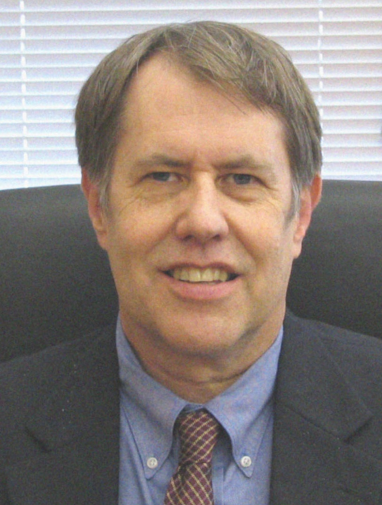
Over eight decades ago, after the invention of quantum mechanics, P. A. M.
Dirac made the following observation: “The underlying physical laws
necessary for the mathematical theory of a large part of physics and
the whole of chemistry are thus completely known, and the difficulty
is only that the exact application of these laws leads to equations
much too complicated to be soluble. It therefore becomes desirable
that approximate practical methods of applying quantum mechanics
should be developed, which can lead to an explanation of the main
features of complex atomic systems..” The creation of “approximate
practical methods” in response to Dirac's challenge has included the
one electron picture, density functional theory and the
pseudopotential concept. The combination of such methods in
conjunction with contemporary computational platforms and new
algorithms offer the possibility of predicting properties of materials
solely on the basis of the atomic species present. I will give an
overview of progress in this field with an emphasis on materials at
the nanoscale.
Jim Chelikowsky obtained a BS degree, Summa Cum Laude, in physics from
Kansas State University in 1970 and a PhD degree in physics from the
University of California at Berkeley in 1975, where he held a National
Science Foundation fellowship. He performed postdoctoral work at Bell
Laboratories from 1976-1978 and was an assistant professor at the University
of Oregon from 1978-1980. From 1980-1987 he worked at Exxon Research and
Engineering Corporate Research Science Laboratories. In this capacity, he
served as group head in theoretical physics and chemistry. He went to the
University of Minnesota in 1987 as a professor within the Department of
Chemical Engineering and Materials Science. He was named an Institute of
Technology Distinguished Professor at Minnesota in 2001. He assumed his
current position as the W.A. "Tex" Moncrief, Jr. Chair of Computational
Materials and professor in the Departments of Physics, Chemical Engineering,
and Chemistry and Biochemistry in 2005.
He has been active in the Materials Research Society having organized
several symposia and in in the American Physical Society where he served on
the Executive Committee of the Division of Materials Physics from 1993-1996
and as the Chair of the Division in 2004. He was named a Fellow of the
American Physical Society in 1987. He was awarded a John Simon Guggenheim
Fellowship in 1996. During the tenure of this Fellowship he spent a
sabbatical at EPFL, Lausanne, Switzerland. He was the Neal Amundson
Professor of Chemical Engineering and Materials Science in 1996 and a Miller
Institute Professor at the University of California at Berkeley in 1999. He
received the David Turnbull Lectureship Award from the Materials Research
Society in 2001 and the David Adler Lectureship Award from the American
Physical Society in 2006. In 2007, he was named a Fellow of the American
Association for the Advancement of Science. He was named an Outstanding
Referee for the American Physical Society, 2008 (lifetime award). In 2011,
he was named a Fellow of the Materials Research Society.
His research has made significant contributions within the field of
computational materials science. His work has focused on the optical and
dielectric properties of semiconductors, surface and interfacial phenomena
in solids, point and extended defects in electronic materials, pressure
induced amorphization in silicates and disordered systems, clusters and
nano-regime systems, diffusion and microstructure of liquids, and the
development of high performance algorithms to predict the properties of
materials. He has published over 345 papers, including 5 monographs.
Protein Unfolding and Alzheimer's
Kelvin Cheng, Trinity University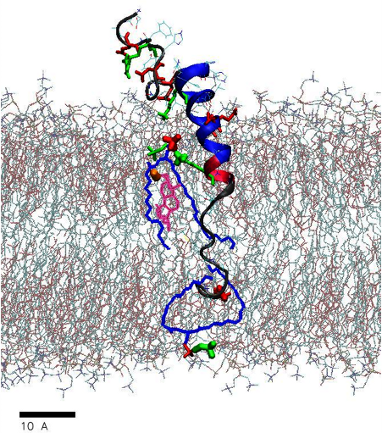
Early interaction events of beta-amyloid (Aβ) proteins with neurons have
been associated with the pathogenesis of Alzheimer's disease.
Knowledge pertaining to the role of lipid molecules, particularly
cholesterol, in modulating the single Aβ interactions with neurons at
the atomic length and picosecond time resolutions, remains unclear. In
our research, we have used atomistic molecular dynamics simulations to
explore early molecular events including protein insertion kinetics,
protein unfolding, and protein-induced membrane disruption of Aβ in
lipid domains that mimic the nanoscopic raft and non-raft regions of
the neural membrane. In this talk, I will summarize our current work
on investigating the role of cholesterol in regulating the Aβ
interaction events with membranes at the molecular level. I will also
explain how our results will provide new insights into understanding
the pathogenesis of Alzheimer's disease associated with the Aβ
proteins.
Kelvin Cheng is the Otis M. Williams and Evelyn Freeman Williams Endowed
Professor in Interdisciplinary Physics at Trinity University and a faculty
on leave at Texas Tech University. His research interests involve the
physics of various biological systems at the molecular, cellular and tissue
(or device) levels. At the molecular and cellular level, he focuses on
studying the molecular organization and dynamics of the multi-component
lipid bilayer and how they regulate the membrane protein unfolding insertion
and activities. At the tissue or device level, he is interested in the
MRI-based gel dosimetry, relaxation and diffusion MRI, development of
sensors for forensic applications and cell-based biochips. Currently, he
uses an integrated computational and single-molecule experimental approach
to investigate the role of cholesterol on the unfolding, insertion, and
cytotoxicity of human Alzheimer's protein on neurons. In addition to his
biophysics research at Trinity and Texas Tech, he has also served as a
consultant for a start-up biotechnology company and is currently the
Chair-Elect of Texas Section APS. He was also a PI of an NIH-STEM award to
study the effectiveness of research-based laboratory reform on improving the
conceptual understanding and problem-solving skills of students in
introductory physics courses.
Integration of functional oxides and semiconductors
Alex Demkov, University of Texas at Austin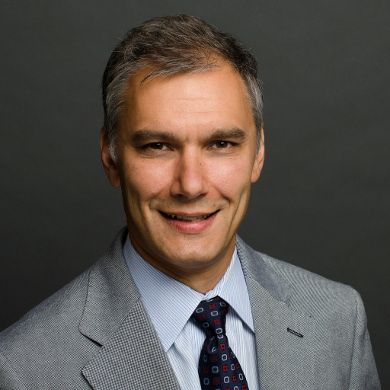
The astounding progress of recent years in the area of oxide deposition has
made possible the creation of oxide heterostructures with atomically
abrupt interfaces. The ability to control the length scale, strain,
and orbital order in these materials structures offers a uniquely rich
toolbox for condensed matter physicists. Because the oxide layers are
very thin, the physics is often controlled by the interface. The
electronic properties of oxide interfaces are governed by a subtle
interplay of many competing interactions such as strain, polar
catastrophe, electron correlation, and Jahn-Teller coupling, as well
as by defects and phase stability. It is not clear which, if any, of
these newly discovered systems will find applications in future
high-tech devices. However, they undoubtedly hold tremendous promise,
particularly when integrated with conventional semiconductors such as
Si. In this talk, I will review our recent results in theoretical
modeling and experimental realization of several epitaxial oxide
heterostructures. I will set the stage with a brief discussion of
extrinsic magnetoelectric coupling at the interface of a perovskite
ferroelectric and conventional ferromagnet. I will then describe our
recent successful attempt to integrate anatase, a photo-catalytic
polymorph of TiO2, with Si (001) using molecular beam epitaxy. In
conclusion, I will talk about strain stabilized ferromagnetism in
correlated LaCoO3 (LCO) and monolithic integration of LCO and silicon
for possible applications in spintronics. The integration is achieved
via the single crystal SrTiO3 (STO) buffer epitaxially grown on Si.
Superconducting quantum interference device magnetization measurements
show that, unlike the bulk material, the ground state of the strained
LaCoO3 on silicon is ferromagnetic with a TC of 85 K.
Alexander Demkov earned his Ph.D. in theoretical
condensed matter physics from Arizona State University. He is a Professor
of Physics at the University of Texas at Austin. He moved to the University
of Texas after nine years as a principal staff scientist in Motorola’s R&D
organization, where he worked on the physics of nano-scale materials and
devices, and on conduction mechanisms in nano-systems. He has made
significant contributions to the understanding of the physics of high
dielectric constant materials, i.e., transitional metal oxides including
perovskites, and their interfaces with semiconductors and metals.
In his university research, Demkov has pursued applied research on materials
for advanced CMOS technology. Currently his primary research interest is
focused on the physics of oxides, oxide heterostructures and oxide epitaxy.
Current work includes: (1) electronic properties and crystal growth in
epitaxial semiconductor/oxide systems; (2) properties of thin films and
nanostructures involving multiferroic oxides; (3) phase transitions and
dielectric properties of transition metal oxides; (4) properties of
biomaterials.
Demkov is a Fellow of the American Physical Society and recipient of a
National Science Foundation CAREER Award. In 2011, he received the IBM
Faculty Award. He has published more than 100 research papers, and has been
awarded seven U.S. patents. He co-authored the 2005 edition of the
Semiconductor Roadmap, and has served as associate editor of the Journal of
Vacuum Science and Technology, and guest editor for several issues of the
journal physica status solidi (b). He has contributed to several books and
edited a book entitled “Materials Fundamentals of Gate Dielectrics.”
Transient Plasma Physics: Nanosecond Pulsed Power Applied to Energy, Engines, and Other Things
Martin Gundersen Group, University of Southern California, Presented by Scott J. Pendleton
A plasma in a formative state prior to equilibration of the electron energy
distribution, (referred to here as a “transient plasma''), is studied
for improvement of engine efficiency in various types of fuel-burning
engines. Ignition by transient plasma has demonstrated substantially
reduced ignition delay, and shows promise for improving engine
efficiency through improved combustion efficiency. This transient
plasma persists for only a short time, and requires for operation
short (< 100ns) pulsed high voltage, and typically small pulse energy
(10mJ to < 1J). It thus requires nanosecond-time scale pulsed power.
The plasmas, combined with the subsequent combustion, provide a rich
physics. Results for studies of several varied engine types including
internal combustion engines and pulse detonation engines will be
reviewed. Experiments and modeling to determine the physics and some
ideas for future directions will be presented. In addition, some other
diverse applications for nanosecond pulsed power will be briefly
described.
Scott J. Pendleton is the most recent Ph.D. graduate of Prof. Martin
Gundersen's Pulsed Power Group at the University of Southen California. A
native of Oregon, he received the BS in Physics from the University of
Washington in 2006. After a one year research appointment at Los Alamos
National Laboratory, Scott began his Ph.D. work at USC in Physics which he
completed in 2012. While at USC he was a recipient of the National Science
Foundation Graduate Research Fellowship Program. His research work has
focused on spectroscopy and optical diagnostics, from optical thermometry of
solid state cooling at LANL to optical thermal and species measurements of
fast plasmas in combustion environments at USC. He is representing
Professor Martin Gundersen's group, a highly interdisciplinary group which
specializes in the development and applications of pulsed power.
Characterization and Optimization of Multiscale and Multicomponent Nanosystems
Kelly Nash, University of Texas at San Antonio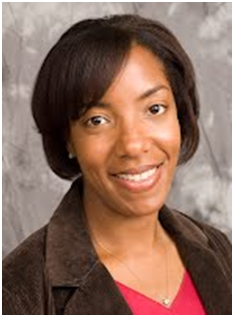
Materials with new combinations of properties are increasingly needed to
meet the requirements of energy, transportation, and medical
applications. The use of multi-component systems, with potentially
complementary properties, represents a unique path to improve the
materials properties for a variety of applications. Among the most
interesting applications of these materials is in the development of
contrast agents in biological imaging and dynamic sensing
applications. Although a variety of techniques to characterize these
materials exist, noninvasive characterization methods, such as
optical-based techniques, are ideal for studying these materials in
their native states and for monitoring dynamic changes. The
proposition becomes even more attractive when at least one of the
components carries an optical signature. The use of optoacoustics (OA)
is an emerging technology based on studying optically absorbing nano
and microstructures in the sample by recording transit pressure waves
generated from laser-induced thermal expansion. More recently OA has
been developed as a vibrant technology for medical applications and
some growing applications are for material characterization in
research and industrial applications. Specifically, OA can assist in
the characterization and optimization of composite materials
containing nanoparticles when paired with other characterization
techniques. The present work illustrates an overview of select hybrid
nanomaterials, including their unique optoacoustic signatures
utilizing an all optical OA technique. The results of this work show
that optical based techniques such as OA, provide a noninvasive,
nondestructive means to study multi-material, multi-scale,
multi-functional materials. This is important in the development of
novel multi-component nanomaterial schemes and elucidating the
structure-function relationship in these materials.
Kelly L. Nash is an Assistant Professor of Physics at the University of
Texas at San Antonio. Her research focuses on the structure and functional
relationships in nanocomposite materials. She has worked on the synthesis
and characterization of nanoparticles and their incorporation into polymeric
systems. Her current interests are focused on developing novel
biocompatible nanocomposites systems that respond to external stimuli while
simultaneously utilizing spectroscopic analysis techniques such as
absorption and photoacoustic properties to understand the material
properties.
Dr. Nash has authored several papers in the area of rare earth
nanomaterials and is a past Director’s Fellow with the Center for
Biophotonics at UC Davis. She has been very active in education and
outreach. As a devoted teacher and mentor, she currently hosts high school
and community college students in the research lab, is an education and
outreach coordinator for the UTSA/Northwestern University NSF-funded PREM
program and serves as the faculty advisor the Society of Physics Students.
DNA in Nanoscale Electronics
Jason Slinker, University of Texas at Dallas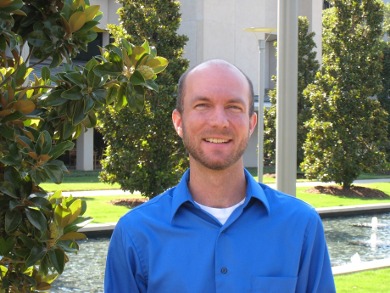
DNA, the quintessential molecule of life, possesses a number of attractive
properties for use in nanoscale circuits. Charge transport (CT)
through DNA itself is of both fundamental and practical interest.
Fundamentally, DNA has a unique configuration of π-stacked bases in a
well ordered, double helical structure. Given its unparalleled
importance to life processes and its arrangement of conjugated
subunits, DNA has been a compelling target of conductivity studies. In
addition, further understanding of DNA CT will elucidate the
biological implications of this process and advance its use in sensing
technologies. We have investigated the fundamentals of DNA CT by
measuring the electrochemistry of DNA monolayers under
biologically-relevant conditions. We have uncovered both fundamental
kinetic parameters to distinguish between competing models of
operation as well as the practical implications of DNA CT for sensing.
Furthermore, we are leveraging our studies of DNA conductivity for the
manufacture of nanoscale circuits. We are investigating the electrical
properties and self-assembly of DNA nanowires containing artificial
base pair surrogates, which can be prepared through low cost and high
throughput automated DNA synthesis. This unique and economically
viable approach will establish a new paradigm for the scalable
manufacture of nanoscale semiconductor devices.
Jason Slinker is an Assistant Professor of Physics at the University of
Texas at Dallas. He received his PhD in Applied and Engineering Physics from
Cornell University in 2007 working under the direction of Professor George
Malliaras. In 2007-2010, he was a postdoctoral scholar with Professor
Jacqueline Barton of the California Institute of Technology. He moved to UT
Dallas in 2010. His research involves understanding and controlling the
interplay between ionic and electronic charges in soft materials to produce
unique electrical properties and novel device capabilities. His work with
electrochemical devices includes DNA bioelectronics for nanoscale circuits
and sensors and organic optoelectronic devices for energy efficiency. His
efforts have led to over 30 publications with a total of over 1000 citations
and three patents. He is a member of the American Physical Society and the
Materials Research Society.
Implementation of Math Pre-testing and Tutorials for Improving Student Success in Algebra-based Introductory Physics Course
Donna Stokes, University of Houston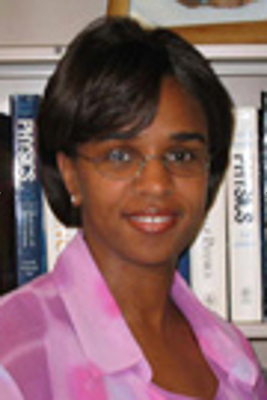
The student success rate in the algebra-based Introductory General Physics I
course at the University of Houston (UH) and across the United States
is low in comparison to success rates in other service courses. In
order to improve student success rates, we have implemented, in
addition to interactive teaching techniques, pre-testing as an early
intervention process to identify and remediate at-risk students. The
pre-testing includes a math and problem-solving skills diagnostic exam
and pre-tests administered prior to all regular exams. Students
identified as at risk based on their scores on these pre-tests are
given incentives to utilize a tutoring intervention consisting of
on-line math tutoring to address math deficiencies and tutoring by
graduate Physics Teaching Assistants to address student understanding
of the physics concepts. Results from 503 students enrolled in three
sections of the course showed that 78% of the students identified as
at-risk students by the diagnostic exam who completed the math
tutorial successfully completed the course, as compared to 45% of
at-risk students who did not complete the math tutorial. Results of
the pre-testing before each regular exam showed that all students who
were identified as at risk based on pre-test scores had positive gains
ranging from 9% -- 32% for the three regular exams. However, the large
standard deviations of these gains indicate that they are not
statistically significant; therefore, pretesting before exams will not
be offered in the course. However, utilization of the math tutorials
as remediation will continue to be offered to all sections of the
algebra-based course at UH with the goal of significantly improving
the overall success rates for the introductory physics courses.
Donna W. Stokes is an Associate Professor of Physics at the University of
Houston, where she has been a faculty member since 2000. Her research
focuses on understanding the structural, optical and electrical properties
of semiconductor materials for the development of novel detectors and lasers
for infrared applications. She is also the Undergraduate Academic Advisor
for the Department of Physics.
Dr. Stokes is actively involved in improving the introductory level physics
courses through development of teaching pedagogy. In the Fall 2006 semester
she was part of a team that developed and implemented a diagnostic exam for
the General Physics and University Physics courses. They also developed a
new course, Phys 1100, Physics Problem Solving Techniques, which has been
taught since the Fall 2007 semester. They also developed an interactive
course for the algebra-based physics course which is structure the same as
the Phys 1100 problem solving course. Dr. Stokes has also been instrumental
in establishing a teaching pedagogy based on an alternative teaching method
known as “Peer Instruction” which was developed by Harvard professor Eric
Mazur. This teaching technique also incorporates the use of a personal
response system during classroom lecture for gauging the students
understanding of the physics concepts.
Lessons From a Large-Scale Assessment Project at Texas Tech
Beth Ann Thacker, Texas Tech University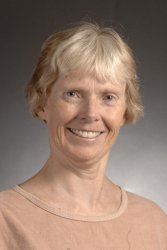
Some results of a large-scale assessment project at Texas Tech University
will be discussed. We will discuss (1) the use of both written pre-
and post-tests and commonly used conceptual inventories as a measure
of students' understanding in the introductory courses, (2) the
efficacy of multiple choice assessment, based on research on the
effect of problem format on students' answers and (3) the need for the
development of a more comprehensive assessment instrument(s) that
could be used to compare students' analytical, quantitative,
computational, laboratory, and critical thinking skills, as well as
their conceptual understanding, across courses and universities. We
present results of the work done at Texas Tech University and discuss
work being done nationally as part of the American Association of
Physics Teachers (AAPT) to move towards a more comprehensive
assessment of our introductory courses.
Beth Ann Thacker is an Associate Professor of Physics at Texas Tech
University. She received her Ph.D. in Theoretical Physics (Lattice Gauge
Theory) from Cornell University in 1990. She transitioned from Lattice Gauge
Theory into Physics Education Research (PER) while a postdoc at The Ohio
State University, working with the, then fledgling, PER group headed by
Kenneth Wilson. She spent five years at Grand Valley State University in
Michigan, before moving to Texas Tech in 1999.
Dr. Thacker is heavily involved in PER. She has developed a
laboratory-based, inquiry-based curriculum for the introductory
algebra-based physics course, researched students’ qualitative and
quantitative understanding of physics concepts in courses taught by
traditional and non-traditional methods and researched students'
understanding of topics in modern physics. Recently, she has been heavily
involved in assessment and the development of more comprehensive assessment
instruments, designed to assess skills beyond conceptual understanding.
